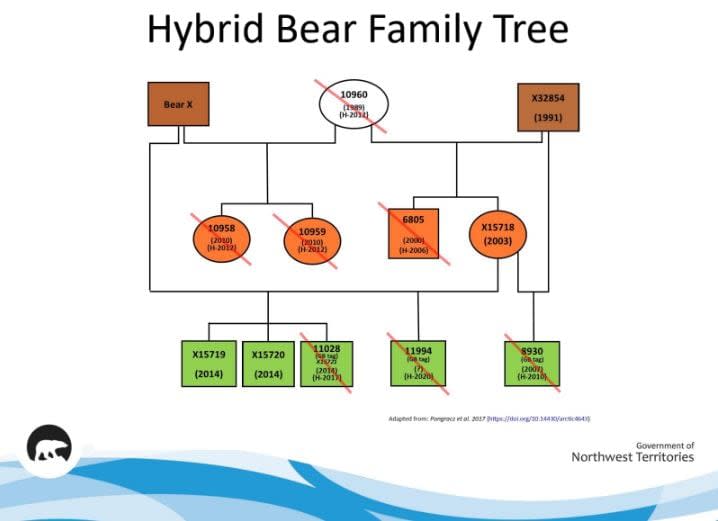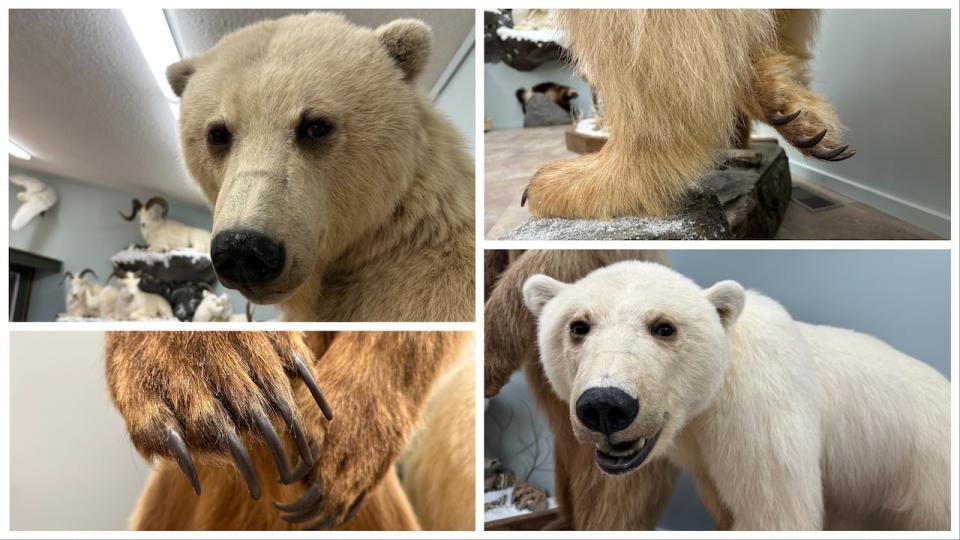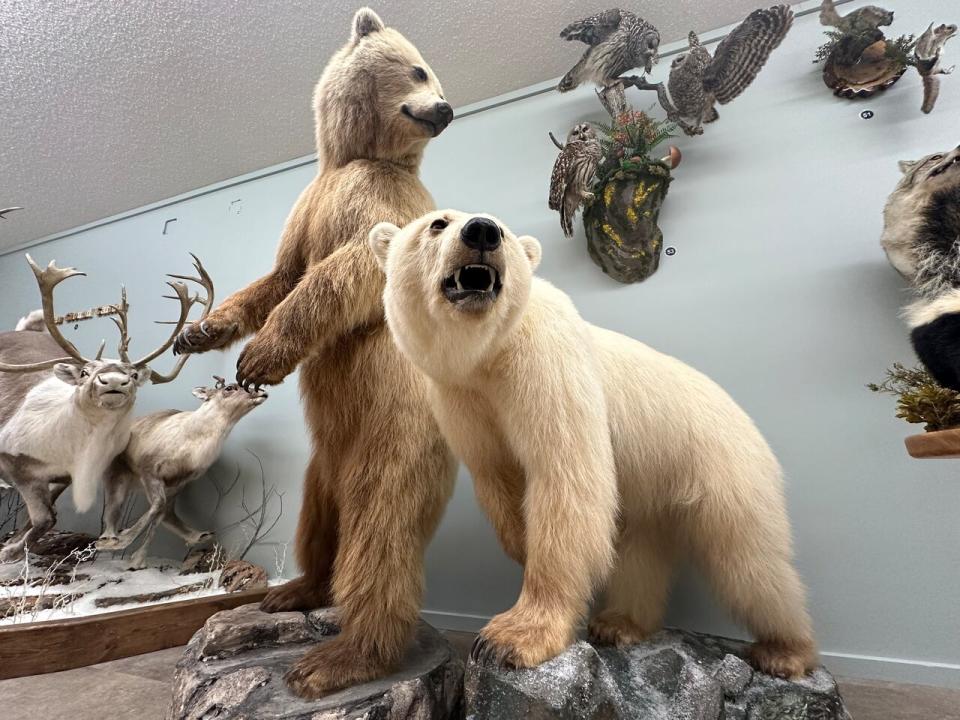Discovering grolars at Yellowknife gallery were related was 'pretty cool' says taxidermist
A taxidermist says it was "pretty cool" to discover a pair of grolar bears at his wildlife gallery in Yellowknife were part of the same family.
A grolar bear is a polar bear grizzly hybrid.
The lighter coloured bear on display at Nature's North Wildlife Gallery is a first-generation hybrid bear, meaning it's half polar bear and half grizzly. Standing next to it on its hind legs is a darker, second-generation hybrid bear — which is 75 per cent grizzly.
A study published last week shows how rare grolar bears are, and further confirms something an N.W.T. scientist had already observed: all the known hybrid bears discovered in the western Arctic were part of the same family tree, and can be traced back to the same female polar bear.
"It's pretty fascinating science," said Dean Robertson. "The fact that hybrid second-generations are reproducing is very rare in nature, right?"
He and his brother, Greg Robertson, opened up their gallery last year — putting their work on display. Of all the northern animals inside, Robertson said the two hybrids are among the most "fascinating." He purchased both of them from Ulukhatok, N.W.T. and mounted them on moulds.

The N.W.T. government provided a family tree identifying all the known hybrid bears in the family. Harvest tag numbers associated with the bears in the gallery identify them as part of that family.
The lighter-coloured hybrid at the gallery is number 10958. It was born in 2010 to a polar bear mother that scientists have described as "famous" and "pretty strange" because it mated with grizzly bears on multiple occasions. Bear 10958 was harvested in 2012, the same year as its mother and sibling.
Robertson said the bear had unique fur that was glassy and soft, and was also much longer than a polar bear's fur would be. It had darker fur around its eyes, a "fairly short" neck compared to a polar bear, and a face that was "grizzly-shaped."
"The most obvious feature is the paws, because of the long claws, long claws and then of course the brown colouring coming into it," he said.

Robertson said people have often tell him the second-generation hybrid looks like a "funny-looking" grizzly, with a polar bear-like long neck and a grizzly-like hump on its shoulders.
"Grizzly bears are typically extremely muscular in the front end because they're built for digging, and this had a very slender, slender build to it … lanky might be the right word for it," he said. A grizzly would have been more stocky and bulky.
The second-generation hybrid was given a grizzly bear tag number when it was harvested: number 11028. It was born in 2014 and observed by federal polar bear scientist Evan Richardson as a cub, running with its mother and two siblings. It was harvested three years later.
"I try my best with bringing them back to life," said Robertson. "Bringing them back to life for the public to enjoy and learn from."


